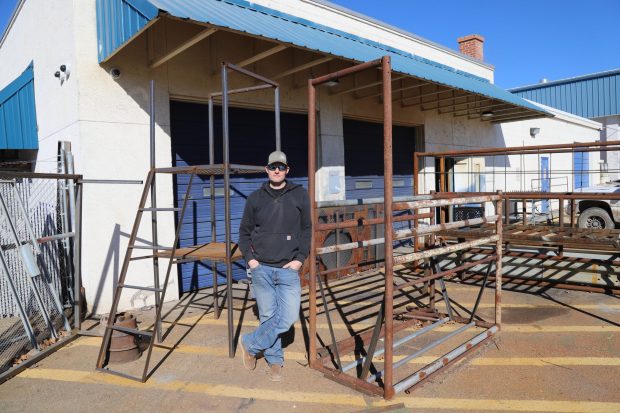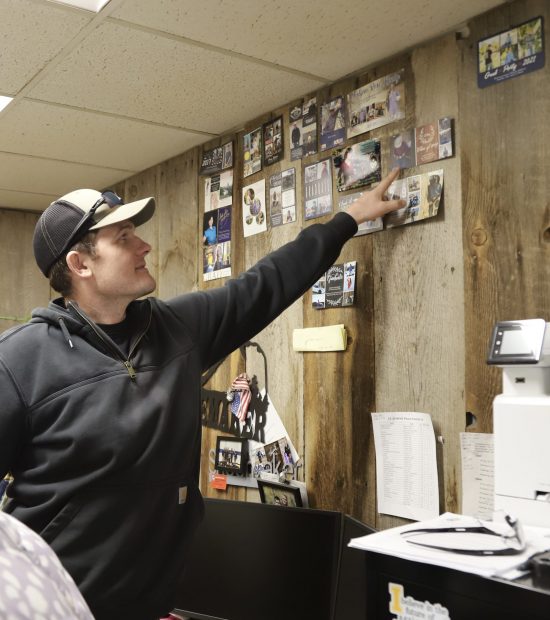Editor’s Note: This story is part of a series on Idaho’s new investments in career technical education (CTE) programs. Reporter Darren Svan traveled the state to find out how rural communities will be impacted by the influx of money and new programs. This months-long series was supported on a grant from the Education Writers Association. Use this link to read previous stories in this series.
The state’s bold move to build new career technical education facilities in rural communities like New Plymouth could be transformational.
State-of-the-art CTE facilities offer opportunities for increased industry certifications, partnerships and training internships. The effect will be a growing number of teenagers prepared to enter the workplace or attend a career technical trade school.
“This is significant for a small town. We will feel the impact for generations to come,” said Chase Shoemaker, a New Plymouth High School CTE teacher and local bison rancher. He’s the only agriculture teacher on staff, overseeing about 160 students each year.

“Once you’re a skilled tradesman, that’s highly transferable to other trades,” Shoemaker said.
New Plymouth is set to receive $2.27 million for a new ag education building because, as most of the town’s 1,400 citizens would agree, the current building is well past its prime — leaky roof, damaged floor, inadequate space and poor ventilation.
New Plymouth’s grant is part of Superintendent Debbie Critchfield’s Idaho Career Ready Students, a $45 million effort to expand CTE programs that prepare students to meet local and regional workforce needs.
The school’s shop area is crowded, there’s only one classroom and a limited number of welding workstations. But interest in learning about welding and animal science continues to grow. And the intellectual capital it develops in teenagers is recognized by their farming and ranching community.
“To us, it’s one less thing we have to train that individual,” said Cody Kramer, a Simplot senior account manager for seed platform.
Built after World War II, the old ag building was constructed as a training center for returning soldiers and was never designed as a high school shop and classroom. One supporter wrote, “Somehow, Chase has been able to make a silk purse out of a sow’s ear, but he’s reaching the limit of what is feasible.”
The new facility will be a 9,600 square foot metal building donated by R & M Steel. It’s expected to open in 2025. While the old building is outdated, the role ag plays in New Plymouth’s economy is more important than ever to teens looking for employment and to local industry employers looking for talent.

Welding students earn about 40 certifications annually and land jobs at Western Trailer, Big Tex, Nelson Metal, Fusion Bumpers and Mil-Stak Industries. Capstone students are hovering around a 100% graduation rate, while the state average sits at 80%.
“I get a lot of kids who will stay in school just to weld,” Shoemaker said. “It keeps them really wanting to come here.”
Kramer said New Plymouth’s ag program is a vital part of industry success. “These rural ag communities are the best one-stop-shop for kids who want to work in the ag industry and who understand the complexities of working in this field,” he said.
More than half of the school’s 270 students participate in ag programs. But there’s demand for more.
“Having this facility … will help us pursue adding a second ag teacher so we can accommodate all the students who want to be in the program,” Shoemaker said.
A graduate of New Plymouth, Shoemaker has deep ties to the ag program and — yes — the aging building too. He studied ag and welding there, as did both his father and grandfather, beginning in the 1940s.
The legacy will continue. Shoemaker is looking forward to the future when his young kids take classes in the new building, estimated to cost $3 million. It will be constructed at the empty lot across from the high school next to the greenhouse.
More than 20 welding stations will be added, so students will have more opportunity to access industry standard equipment, thereby improving student achievement and increasing the number of certifications, Shoemaker said.
“Welding is hours on a machine,” he said.
It’s towns like New Plymouth that teach some of the best agriculture skills, Kramer added.
